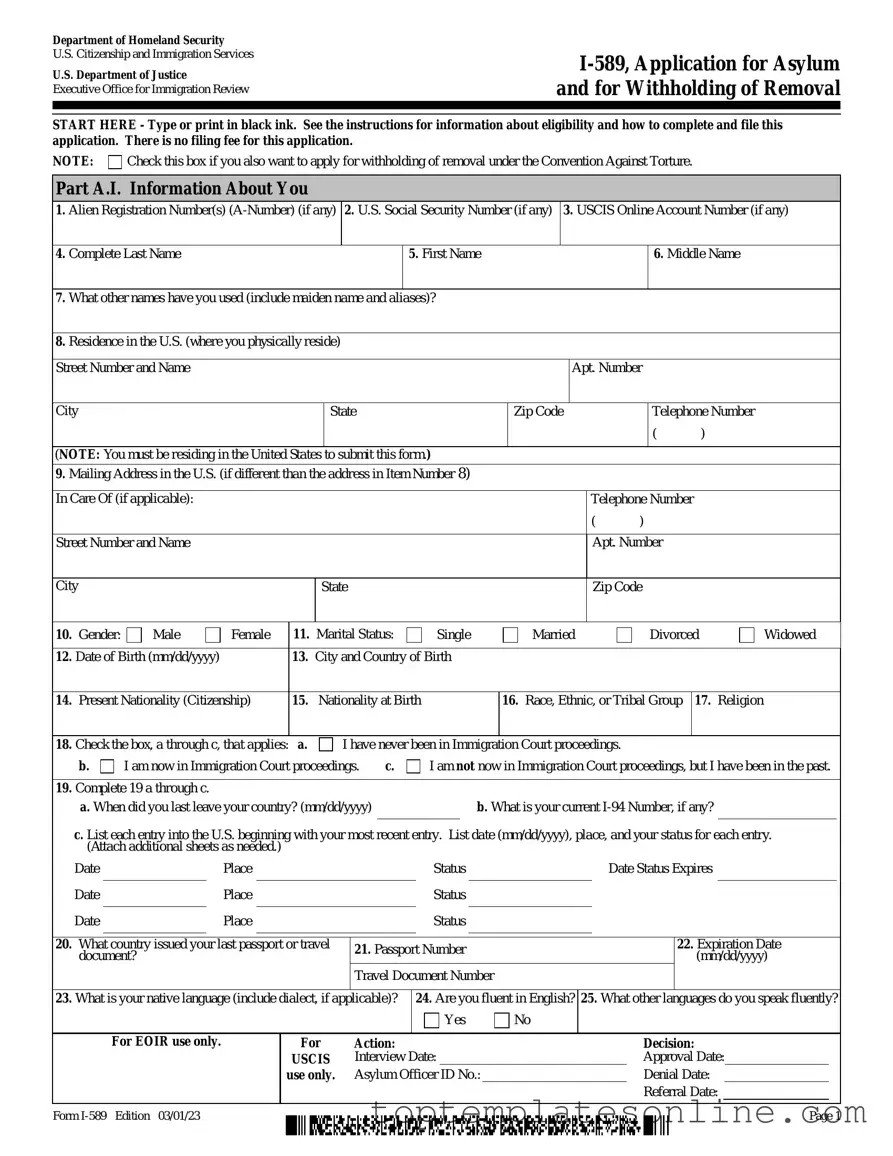The USCIS I-589 form is a crucial document for individuals seeking asylum in the United States. This form allows applicants to formally request protection from persecution in their home countries based on race, religion, nationality, political opinion, or membership in a particular social group. Completing the I-589 is the first step in the asylum process, and it requires detailed information about the applicant's personal history, reasons for seeking asylum, and any evidence supporting their claims. It is essential to provide accurate and thorough responses, as the information will be used to evaluate the application. Additionally, applicants must submit the form within one year of arriving in the U.S., unless they qualify for an exception. Understanding the requirements and implications of the I-589 form can significantly impact the outcome of an asylum application, making it vital for applicants to approach the process with care and diligence.
